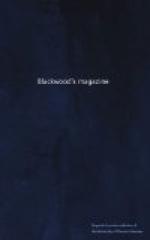[Footnote 66: Thuc. i. cap. 110. The island of Elbo, according to Herodotus, who gives a curious account of the Egyptian marshes and their inhabitants, had been constructed of cinders, in long past times, by a king who lay concealed for fifty years from the Ethiopians; but no man knew its situation, till it was again brought to light, after having been lost for five hundred years, by Amyrtaeus.]
Few if any works of fiction have enjoyed so long and widely diffused a celebrity, as the Ethiopics. Whatever credit may be attached to the story preserved by Nicephorus, of the deposition of Heliodorus from his see, it at least affords evidence of the high popularity of the work, even during the lifetime of the author; and we have the personal testimony of Nicephorus himself, that in his own time, five centuries later, it was still regarded with undiminished favour. Down to the fall of the Greek empire, its style and incidents continued to furnish a model to all the wretched scribblers who attempted the composition of romances—nor was its fame confined within the limits of the language in which it was written. It found a place in the famous library of Matthias Corvinus at Buda; and the dispersion of that celebrated collection on the capture of the city by the Ottomans after the battle of Mohacz, in 1526, first made it known to western Europe: the first edition by Obsopoeus,[67] (printed at Basle in 1534,) having been taken in MS. which fell into the possession of a soldier on this occasion. Among the literati of the sixteenth and seventeenth centuries, its popularity seems almost to have equalled that which it had enjoyed in its native country. Tasso, as has already been noticed, borrowed from it the episode of Clorinda—and Racine (one of whose early productions was also founded upon it) was, in his younger days, so enthusiastic an admirer of it, that when the volume was taken from him by his tutor at Port-Royal, he replied that it mattered little, as he knew the whole by heart! The numerous translations, however, which have appeared in various languages, particularly in French and English, are little calculated to add, by the merits of their execution, to the favour of the work; one English poetical version in particular, by Lisle, published in 1527, is one of the most precious specimens of balderdash in existence—a perfect literary curiosity in its way! Of the others, we need mention only the French one of Amyot, (1558,) not for its merits, but from the author’s having been rewarded by Henry II. of France with the nomination to an abbey—as if in tardy compensation to Heliodorus, in the person of his literary representative, for the see from which the authorship is said to have caused his expulsion.
[Footnote 67: Of the later editions of the Greek text, the best are those of Coray, Paris, 1804; and Mitscherlisch, Strasburg, 1797.]
* * * * *




